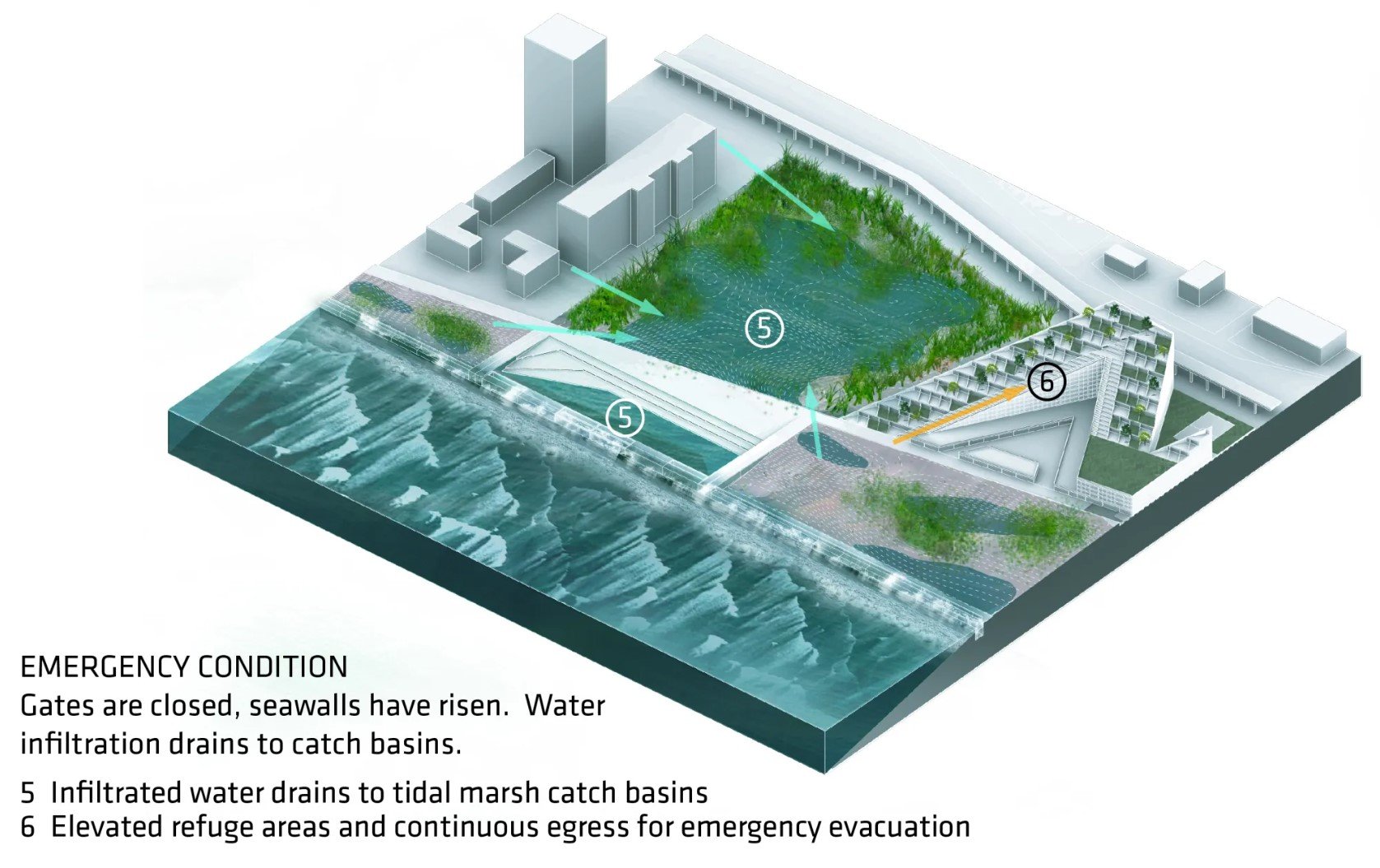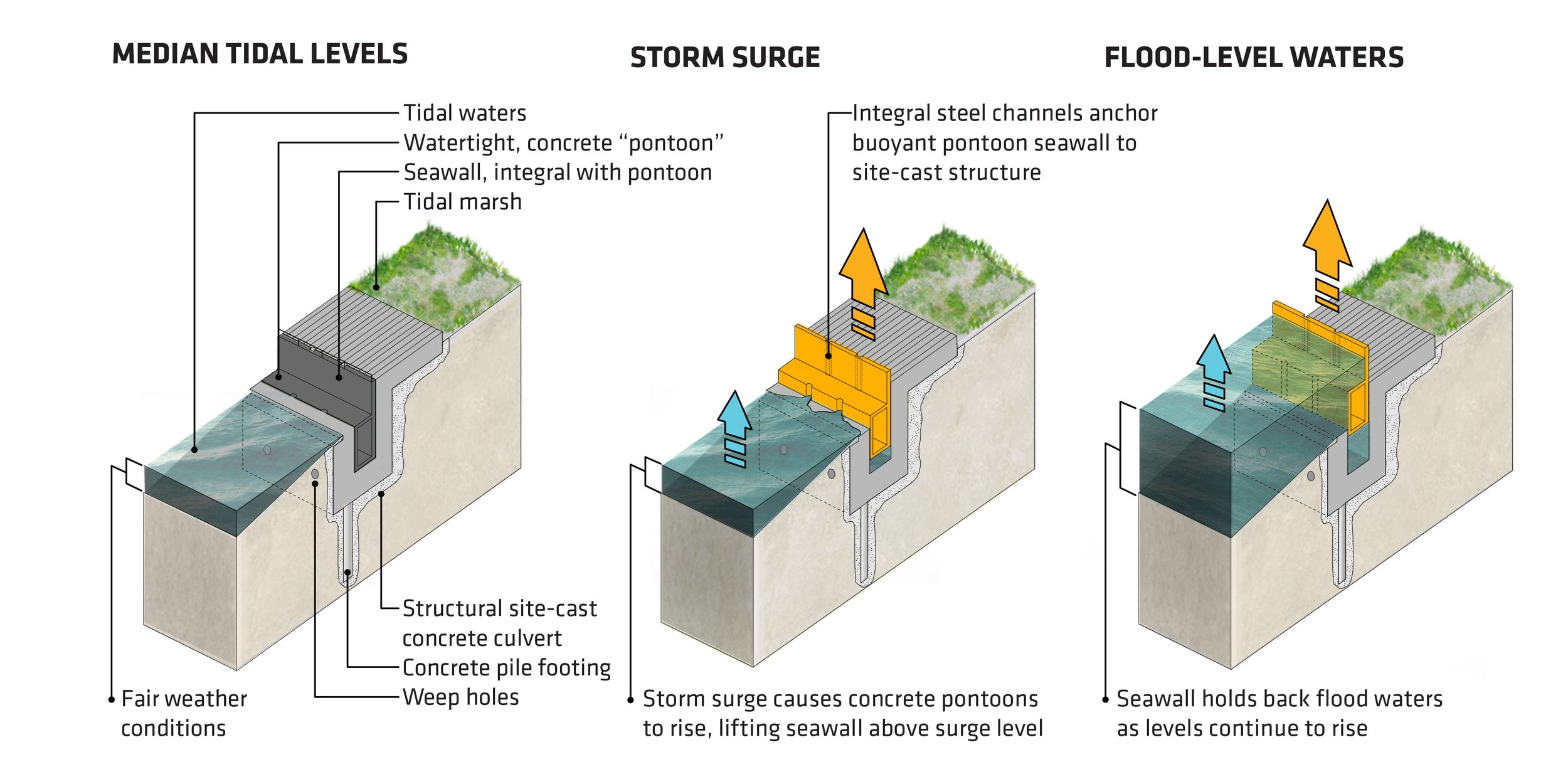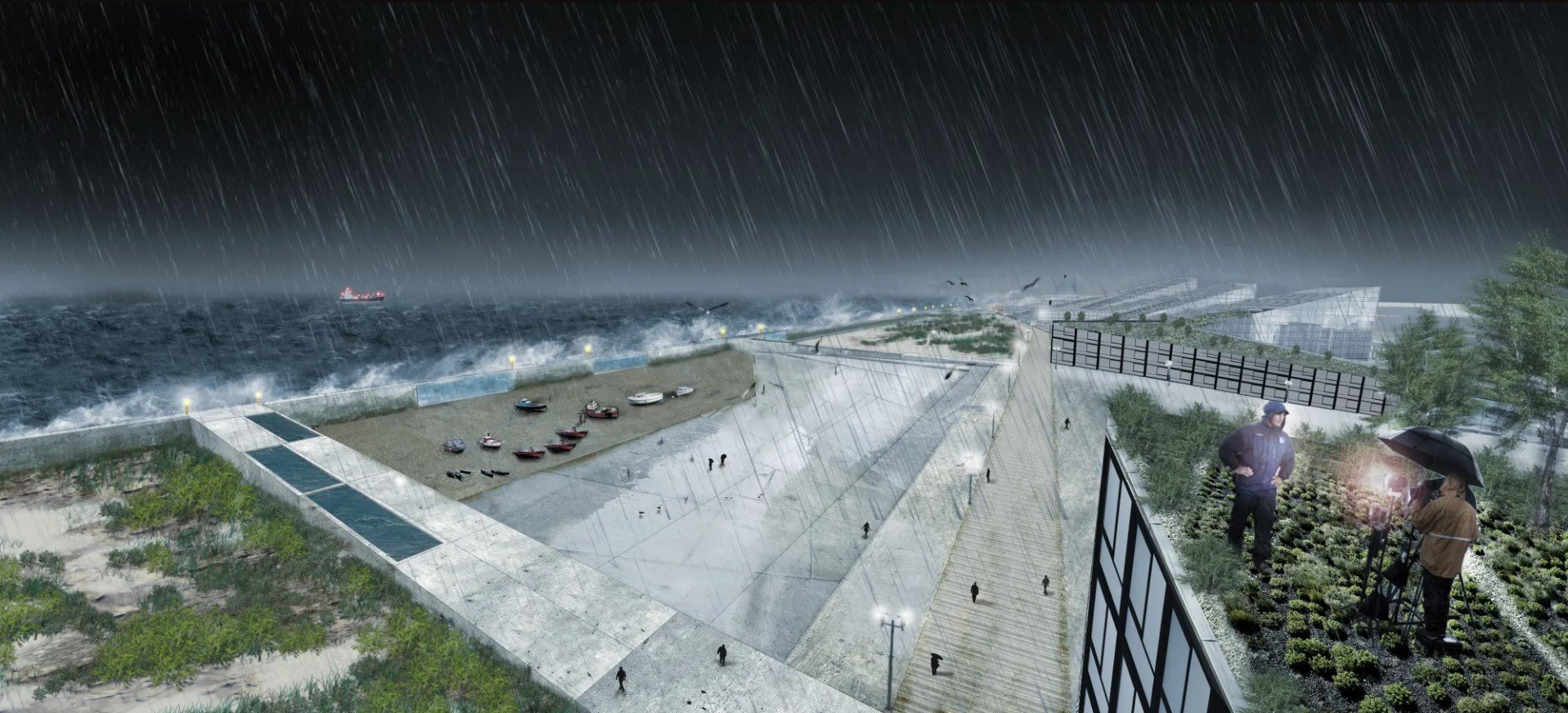Proposed as an Archtect at ORE Design + Technology.
Watergate
Watergate is a new coastal protection system concept that is automatically activated by sea level change. As the tides rise past average peak levels, either through storm surge, or by climate change, Watergate’s buoyant hollow concrete boxes activate the first layer of flood protection.
The dynamic seawall, with a profile similar to the Ha-Ha of the English landscape garden, contains a concrete pontoon that rises with the current, maintaining a flood-gate 15 feet higher than peak tide. The second layer of protection comes when the hinged floating piers slowly swing shut when the pressure from rising water pushes against them. In addition to providing surge protection, the piers contain program ranging from swimming pools and oyster farms, to tide pools, boat marinas, and fishing spots.
When the gates are open the sea reaches the beach creating a swimming area with little to no rip-tide. The sandy depression created by the gates closure acts as a second line of defense, and basin for flood waters that find their way around the first line of defense. The second and third lines of defense are elevated, public egress and refuge zones on rooftops, tidal marshes, dune preserves, and other soft-scapes to absorb and contain water infiltration.
Beyond the walls, dune preserves act as a permeable basin for flood water to seep back into the ocean. In accordance with FEMA’s ABFE, the housing is placed on a 20’ high retail plinth supported by pylons. The zig zag form of the housing compresses the footprint allowing greater area for tidal salt marsh, while providing a greater number of units with sea views.
The tidal marsh areas provide key habitat for native and migratory species. Just as important, with the Watergate closed, the temporarily empty marshes will act as a gravity fed catch basin for inland flooding keeping the higher hardscape dry.
Queens, New York
Project Proposal 2013







